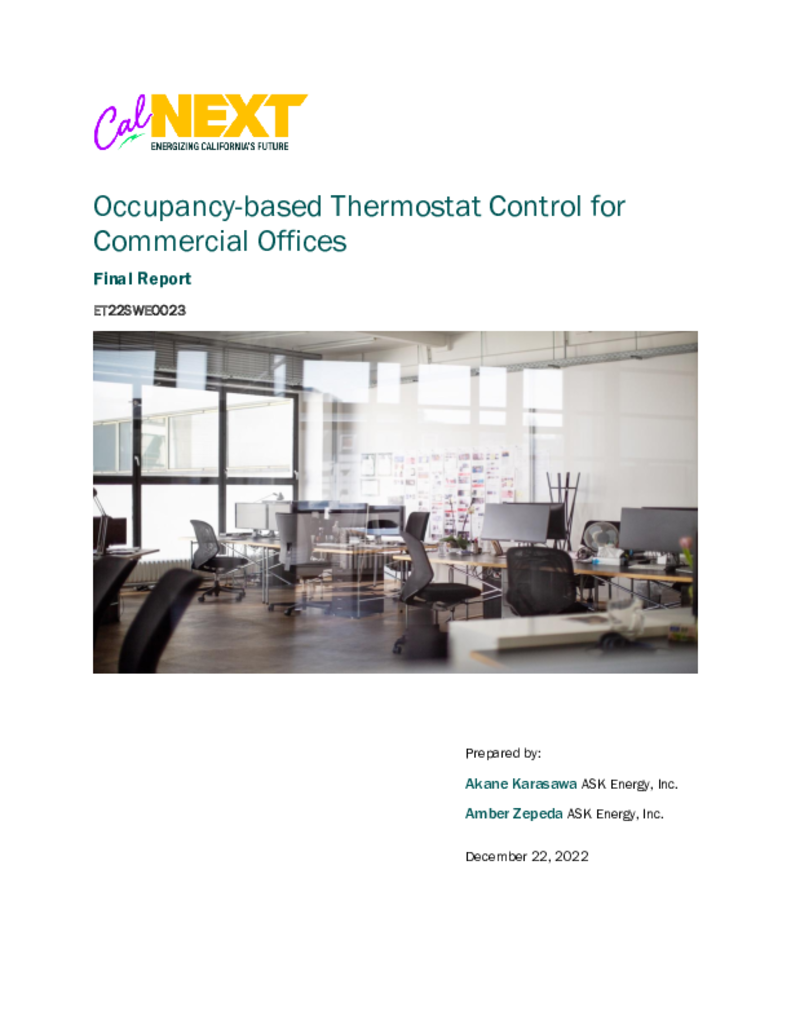ET22SWE0023 - Occupancy-based Thermostats for Commercial Offices

The persistence of Covid-19 and remote work is driving new patterns of variable and unpredictable occupancy in commercial offices, where work flexibility is the new norm and employees may go to the office irregularly or infrequently. In many instances, this may become the new norm. As a result, programmable thermostats and HVAC schedules tuned to regular, consistent occupancy may not necessarily be able to follow these new workplace patterns.
The proposed project will assess the use of occupancy sensors in HVAC systems comprising single HVAC unit serving multiple building zones. By installing wireless connected occupancy sensors in each served space of a single system, the sensors can communicate with the system thermostat to shut off the system when all served spaces are unoccupied. For example, this could reduce energy consumption on days when teams are working from home, during lunchtime hours, or Fridays when many businesses offer modified work hours as an employee benefit. The technology can be used in both new and existing construction. For existing construction, occupancy-based thermostat will replace or be added onto existing thermostat that controls the single-zone HVAC unit. The thermostat can work with any type of single-zone HVAC units, which are typically constant speed units.
The proposed project will measure the impacts of this technology in two California office building host sites. In each building, half of the HVAC units studied will have occupancy-based thermostats installed as the treatment group while the other half will serve as the control group without occupancy sensor feedback. In addition to overall energy savings potential, the study will evaluate potential energy impacts during the summer 4-9 pm period which is being targeted for peak load reduction programs statewide. The study will also perform secondary market research on workplace occupancy patterns, determine the total available commercial market for this technology, identify the landscape of compatible enabling occupancy sensor technologies, perform field energy impact measurements, and survey host site employees to assess occupant comfort impacts.

